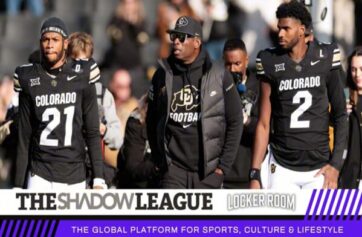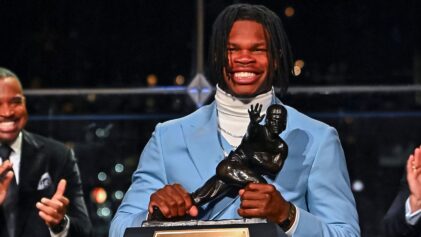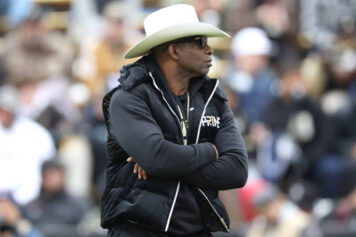Ignoring HBCU DRAFT prospects damages the value of BLACK COLLEGE athletic programs and makes it almost impossible for these schools to attract four and five-star prospects.
Over three days in Cleveland, there were 259 picks taken in the NFL Draft, and not one was chosen from an HBCU.
Couple that with the 2020 draft, and only one player in the last 518 players chosen were taken from an HBCU. This marks the ninth time since 2000 that Black College Football was deemed unworthy of an NFL look.
An anomaly that affected HBCU football prospects in the 2020 Draft, was the COVID-19 pandemic causing the cancellation of the inaugural HBCU combine and also disrupting possible pro-days for players.
Overlooked HBCU Talent
That excuse can’t be used this year as the combine went off without a hitch. Brandon Marshall even held a separate combine for athletes. Many prospects viewed this as their opportunity to be seen and possibly have their names called on draft day.
READ MORE: Brandon Marshall’s House of Athlete Hosts A Scouting Combine For 2021 NFL Draft
There were 460 players listed on the all-important NFL Draft prospect tracker on NFL.com. There were just 5 players from HBCUs listed.
David Moore a guard from Grambling State and someone whom I had listed as a possible sleeper on my mock draft board was the highest-rated Black college prospect, and was projected that be a fourth or fifth-round selection.
“David Moore – Grambling State guard who can really play. COVID-19 took his senior season but he was a three-year starter in the Bayou who displayed great strength and technique at the Senior Bowl.
Moore dominated interior pass rushers all week and even showed an ability to play center as well. Versatility is huge for the SWAC draftee.
Side note: He loves to run block as well and is nasty with it.”
Other players listed include defensive back Bryan Mills of NCCU, who was also projected to hear his name called in the fourth or fifth round. While NCAT defensive back Mac McCain was listed as a fifth or sixth-round pick.
The pandemic canceled 99.9% of HBCU football in 2020 and that lack of visibility carried over into 2021. Most FBS conferences played in what games they could in 2020, but they remain impeded by a lack of resources and finances.
That’s just something Black College football doesn’t have a ton of.
Effects Of COVID-19
The damaging effects of COVID-19 on schools outside of the Power 5 conferences did nothing but put Black college football players behind the proverbial eight-ball in terms of exposure to NFL scouts. The lack of exposure and not having played competitive football in over a full calendar year became a “CON” in the evaluation of every HBCU football player in the 2021 draft class.
Oversaturated Draft Class
Partner that with an inordinate number of FBS players opting out of the season over COVID concerns and the result was an expanded draft pool and an oversaturation of talent for one draft class.
They’ll be some talented, undrafted HBCU players signing free-agent deals in the next couple of days, in fact a few already have, including Moore, Mills and McCain, but not having one player taken in the draft does take some of the wind out of the HBCU football sail.
NFL Pushback against Deion Sanders’ Influence
The HBCU football scene had been full speed ahead with the excitement of the SWAC’s spring football season, the arrival of Coach Prime aka Deion Sanders, and the anticipation of the SWAC super conference next year when FAMU and Bethune Cookman join in on the fun.
Trying to change a system based on the exploitation and oppression of Black athletes won’t be easy. Believe it or not, people like Sanders who are trying to even out the playing field and right the wrongs are going to be targets of those institutions and the people who drive the systemic oppression.
Ignoring HBCU prospects is sending a clear message that the “powers that be” don’t like the boat rocked. Ignoring all HBCU prospects damages the value of the athletic programs and makes it almost impossible for these schools to attract four and five-star prospects.
Three days on Lake Erie once again showed just how far Black college football still must go to regain the visibility, respect and notoriety it once held in regards to some of the NFL’s all-time best players deriving from those institutions.



